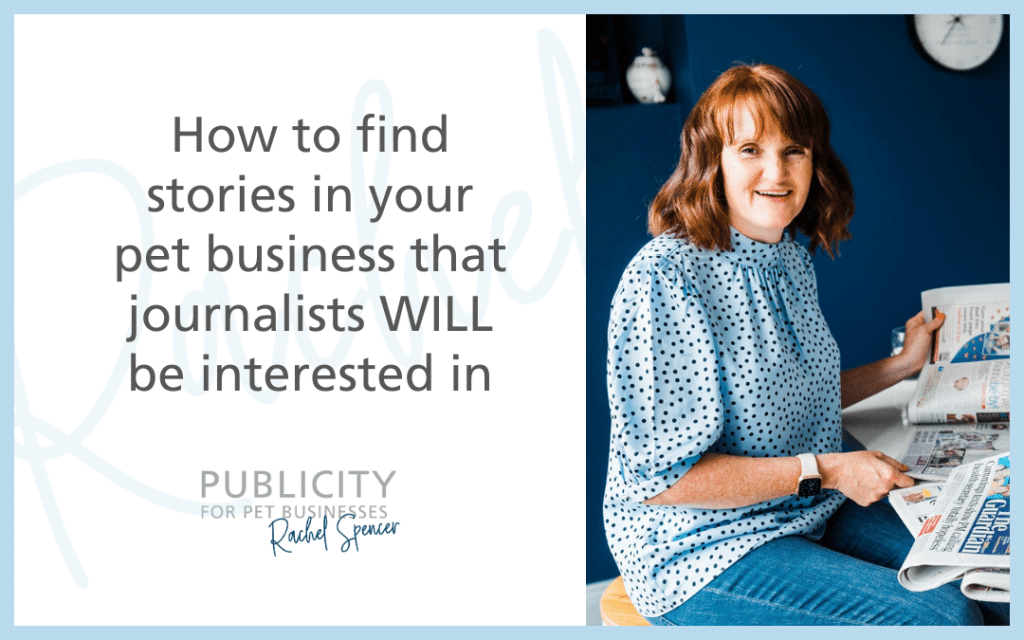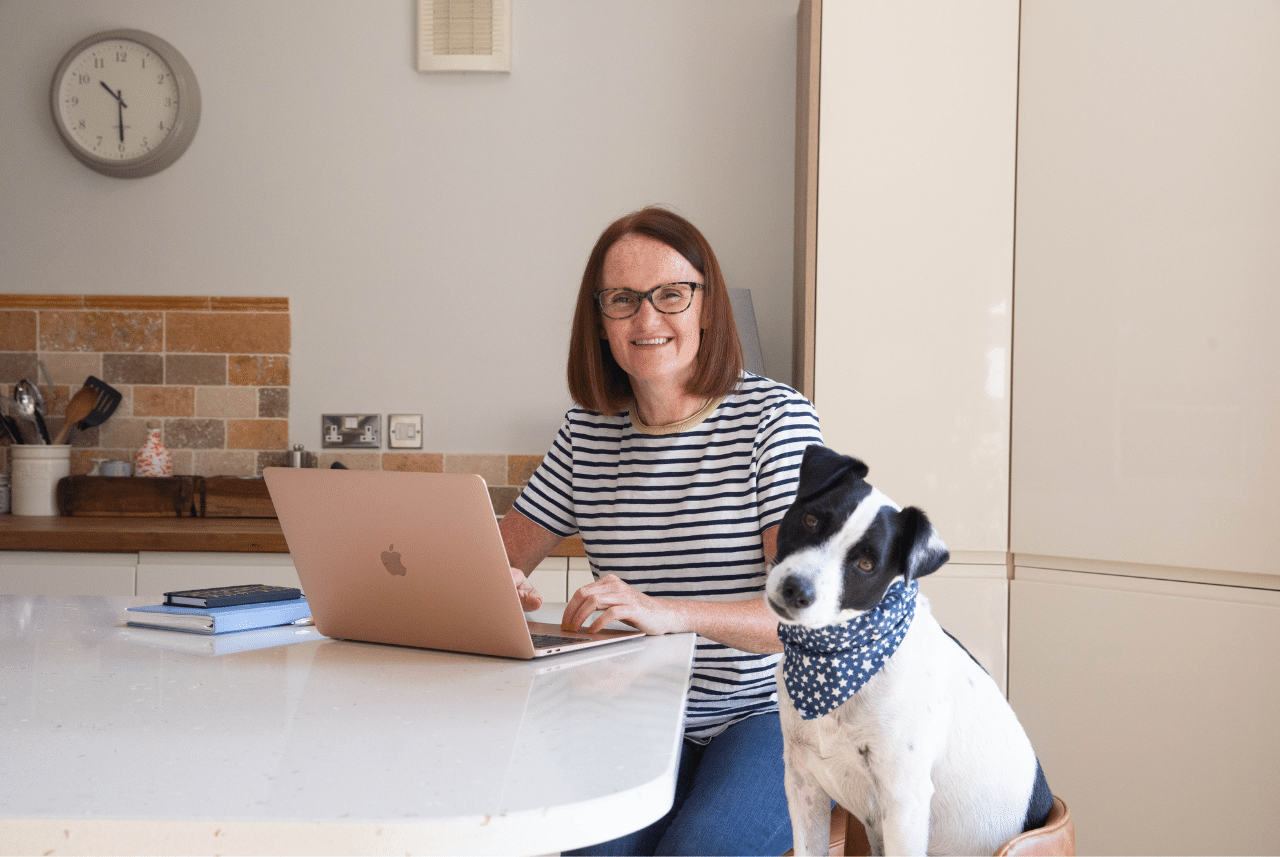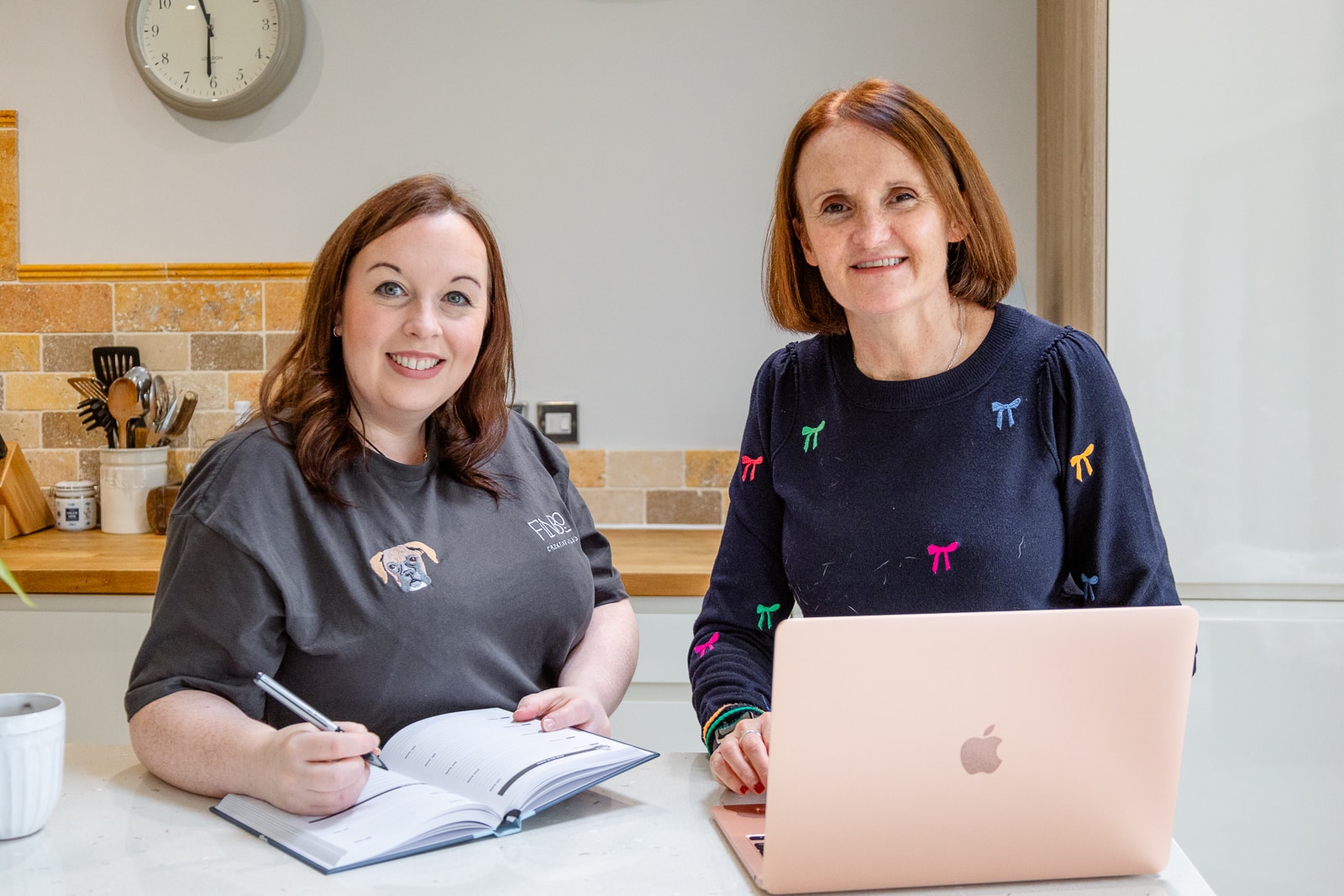If you’re thinking of raising awareness of your pet business in the media then the first thing you need is a story.
Often, when people pitch to the media, the mistake they make is assuming reporters will want to write about them.
Sadly, reporters aren’t able to write about who or what they want.
They need to keep their readers, listeners, viewers or followers informed, educated and entertained.
If your story idea doesn’t do any of those things, then it’s likely to end up in the trash folder.
This weekend I did a talk at Virtual Pet Index, a trade show and online training event set up by the Pet Industry Federation, about how to find stories in your pet business.
This podcast is based on the presentation, and you can listen to it on the player link below or read on as a blog post.
What makes a story?
Each day journalists – staff and freelance – are send HUNDREDS of pitches and press releases but only a few see the light of day.
Journalists need stories to fill their pages or slots on TV and radio shows to entertain their readers and viewers.
The stories need to…
• Inform
• Educate
• Entertain
If your story doesn’t do this, then chances are it won’t get picked up.
Why your pitch might be ignored
These are some of the reasons…
1. The idea isn’t suitable for the publication. For example, you may have sent a pet story to a parenting magazine and it’s not right for their readers.
2. The journalist doesn’t write about that topic. I write about pets but regularly get pitches about baby or beauty products – neither are topics I cover.
3. The timing isn’t right – it’s too late. If you have a story based on an awareness day, make sure you send it a few weeks before the day.
4. It’s not newsworthy. If your idea only serves you and doesn’t appeal to a broad section of readers.
Common press release mistakes
These are some of the reasons your press release might be ignored…
1. They use jargon – language the average pet owner or ‘man/woman on the street’ wouldn’t understand.
2. They’re full of marketing waffle and only serve the person who has issued the press release and not the reader.
3. The story is buried and the journalist has to dig deep to find it.
(often they’ll only read the first few paragraphs)
4. There’s no story.
How do you give journalists what they want?
The most important thing to do is ensure there’s a story there!
It could be a real life story
It could be a business story
It could be a news story
Just make sure there’s something there that will inform, educate, entertain, inspire, amuse.
The aim is to create some kind of emotional response.
Six prompts for story ideas
If you’re struggling to think of ideas in your pet business, there is a worksheet you can download here with six prompts.
Some topics to consider are the following:
Inspiring animal – you could share a story about the pet that inspired you to start your business.
Lightbulb moment – realising there was a gap in the market – eg – Fitbits for dogs like Andrew Nowell did when he created PitPat.
Something new – this could be a new means of solving a problem – a new grooming technique/training process.
News story – has something happened in your pet business that people need to know right now or can you news jack – get involved with a news story.
This is what Suzanne Gould did – she appeared in the Telegraph talking about her Facebook Group for Edinburgh Dogs in Lockdown.
Community or charity story – are you doing something to support your community or a charity that’s inspiring to others?
Achievements – have you won an award or have an achievement to share?
Sally Cousins from Woofers Walkies did this and featured in a full page story about five years in business in her local paper.
Case study – Kim O’Donnell – Leo, Charley and Me
Kim O’Donnell, founder of Leo, Charley and Me pet accessories, wanted to learn to get visible.
She had a business making pretty collars and products for pet owners inspired by her rescue Cocker Spaniel Charley.
But having spent her career working as a school nurse, when it came to standing out online and reaching new customers, she felt totally overwhelmed.
We worked together to identify stories in her business to raise her profile.
Kim thought she was ‘boring’ and didn’t have any stories.
But after four months she’d appeared in the Telegraph, Daily Mail, Sun, Mirror, People, Star, Your Dog, Birmingham Mail, Stoke Sentinel and lots of regional and local lifestyle magazines and worked with pet bloggers and influencers.
Her stories included:
Her collar and bandana being worn by the Prime Minister’s dog Dilyn.
Her Labrador Leo going to a doggy boot camp.
Leo being a ‘lifesaver’ and helping her cope with her health condition.
Key things to consider before pitching a story
It’s not about you – it’s about the reader. Think about what you can give them.
Does it create an emotional response – How will people feel when they read your story? Will they laugh, cry, be inspired?
Give journalists what they want – Think about making their lives easier by giving them stories.
You can download a free five steps to get in the press guide at the end of this blog post.
If you think you have a story or press release idea and would like some support, you can book in for a Power Hour.
This is an hour-long consultancy session where you get expert advice on your press release to improve your chance of getting a yes.
Here is an example of a story that came from a Power Hour for Adios Plastic about compostable poo bins in Pet Business World.
Book in for a consultancy call and choose from 90 minutes or half a day here.
If you found this post helpful, you might like to read What’s the difference between a pitch and a press release? What to do if your press release gets ignored or How to write a press release for your pet business.





